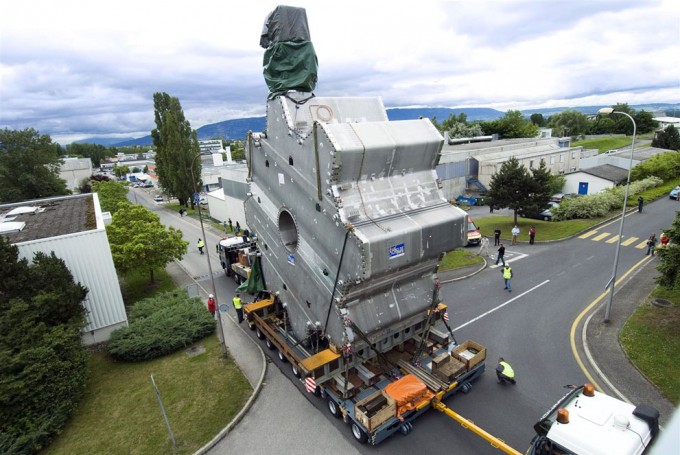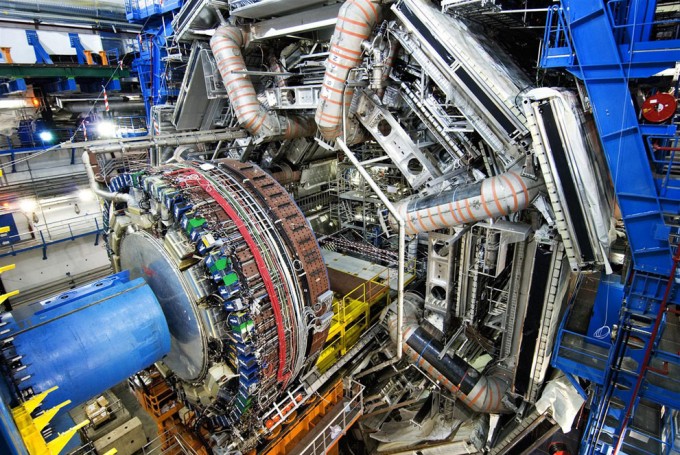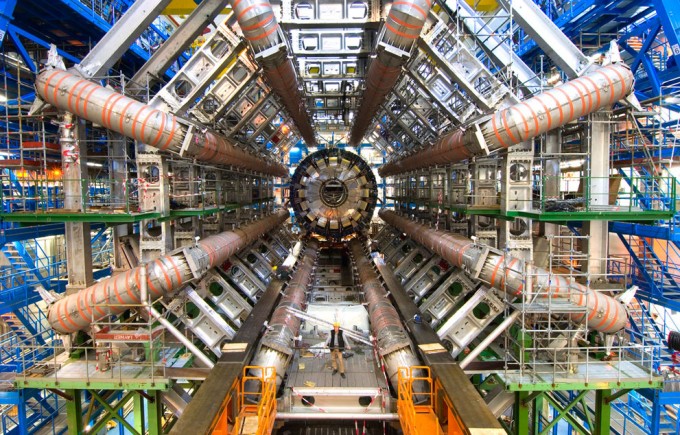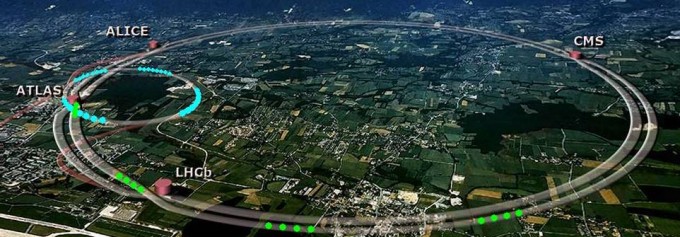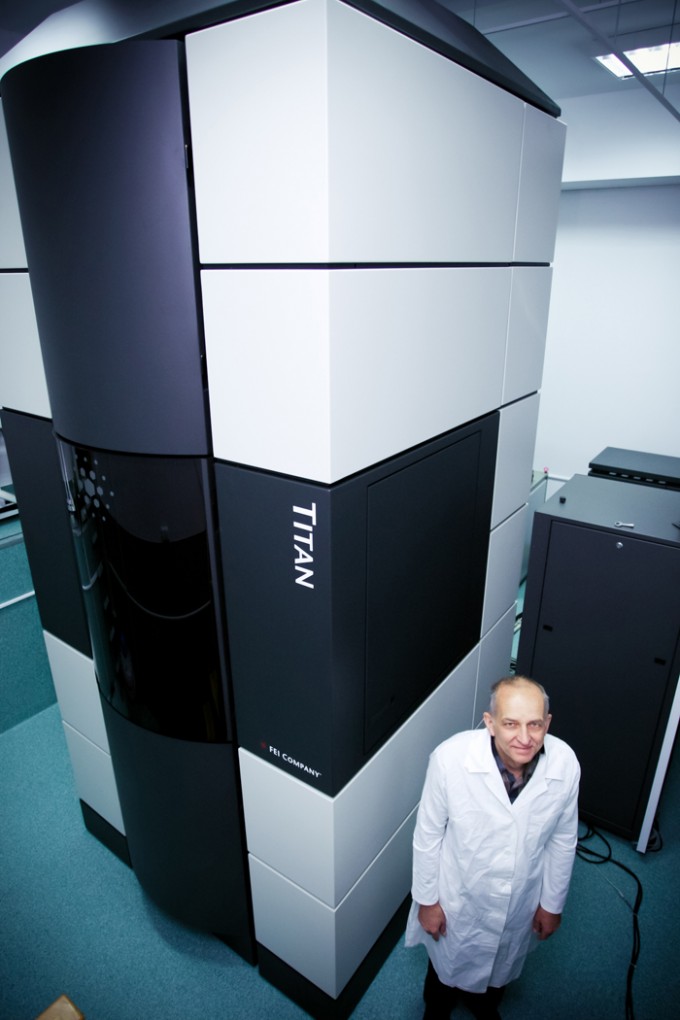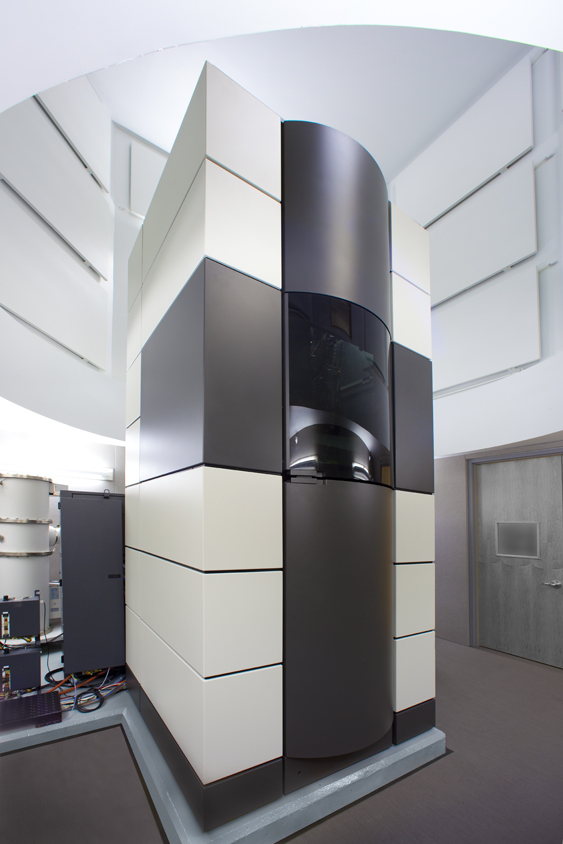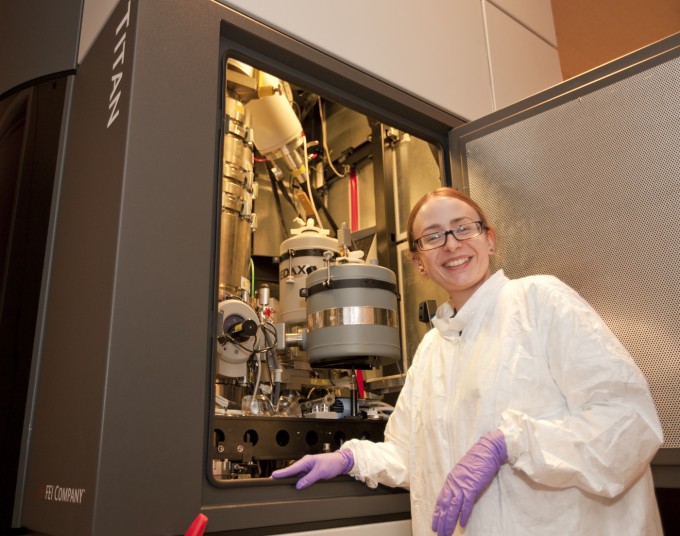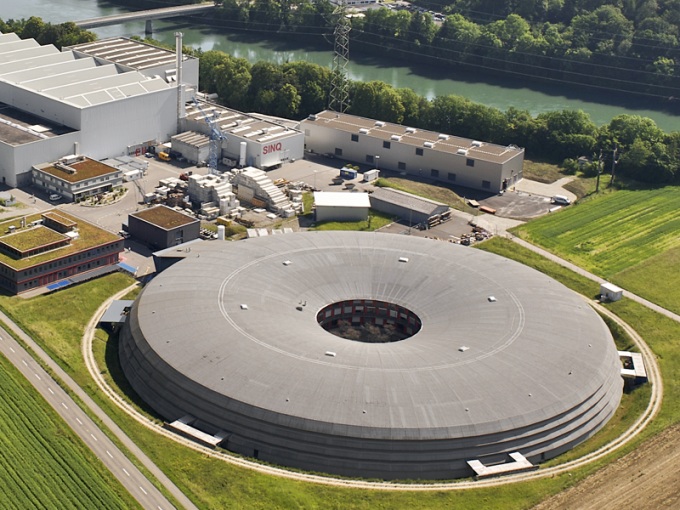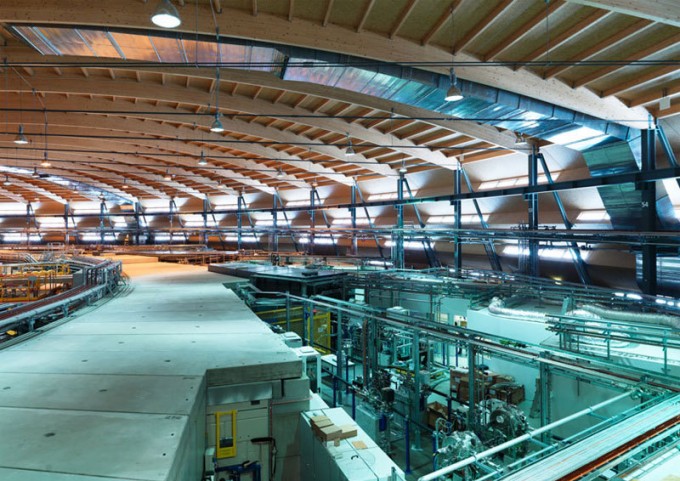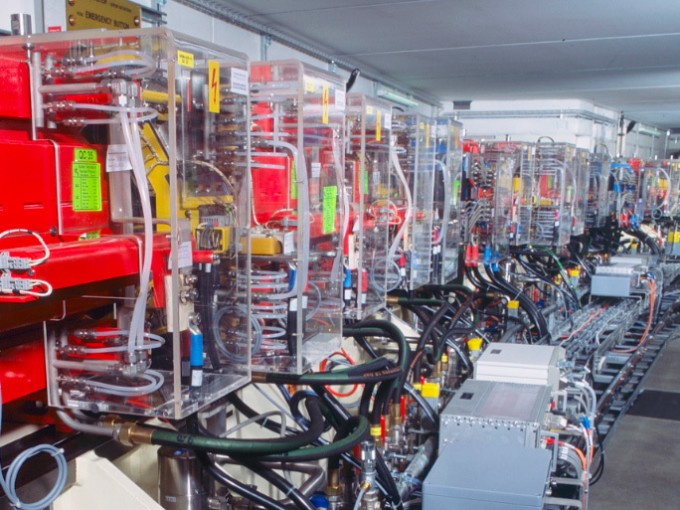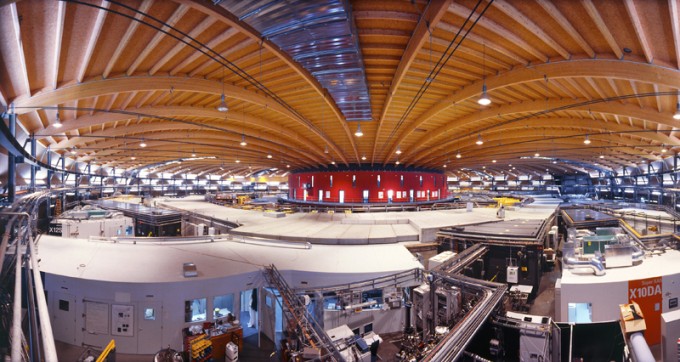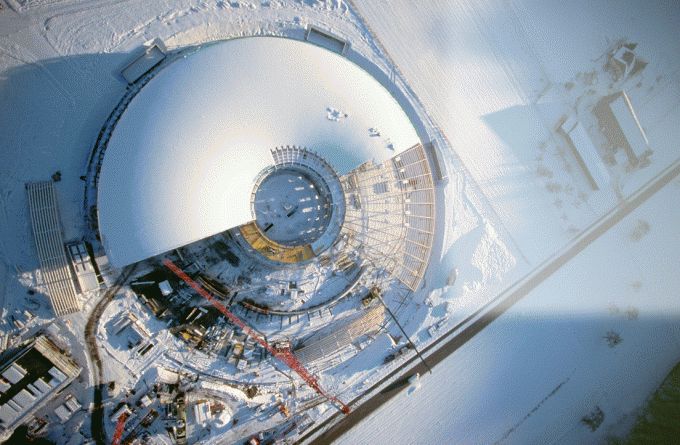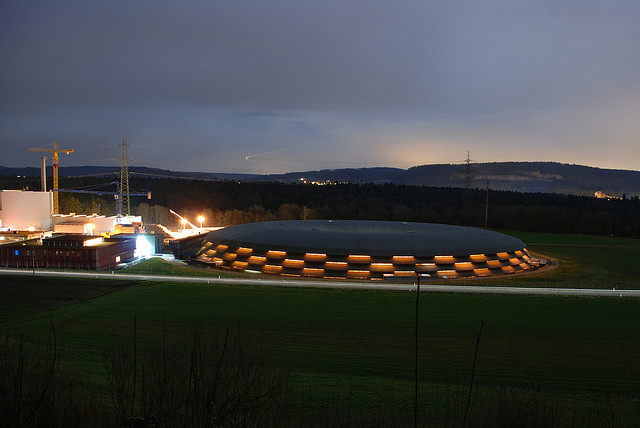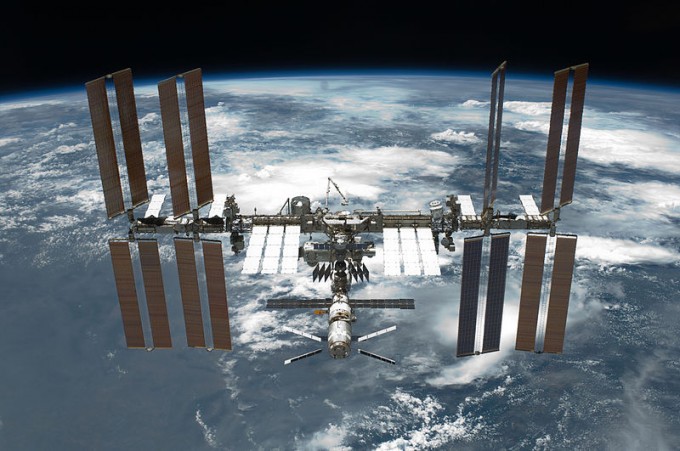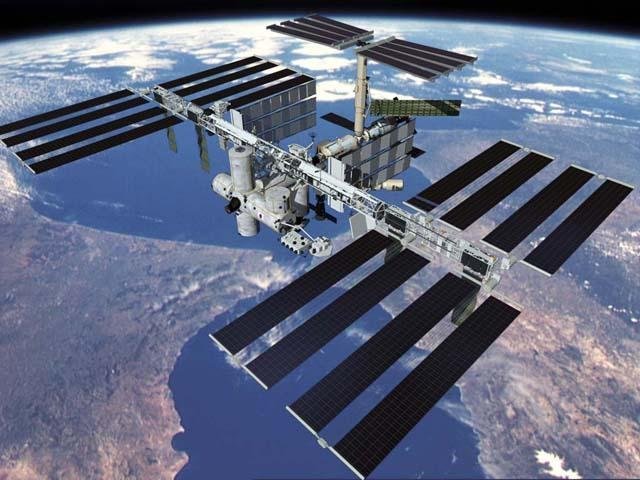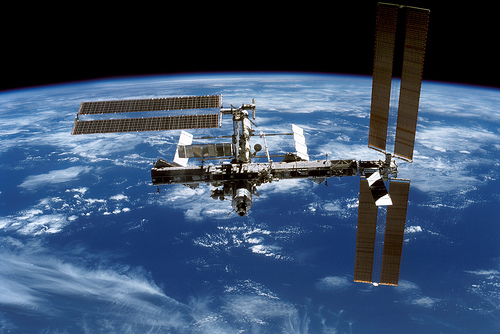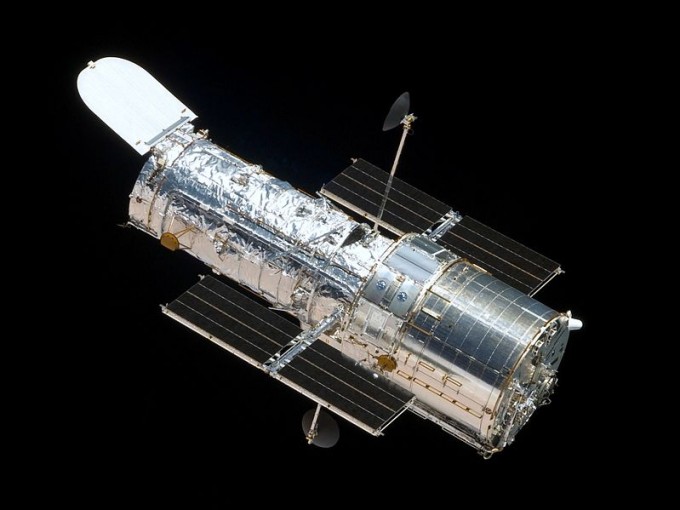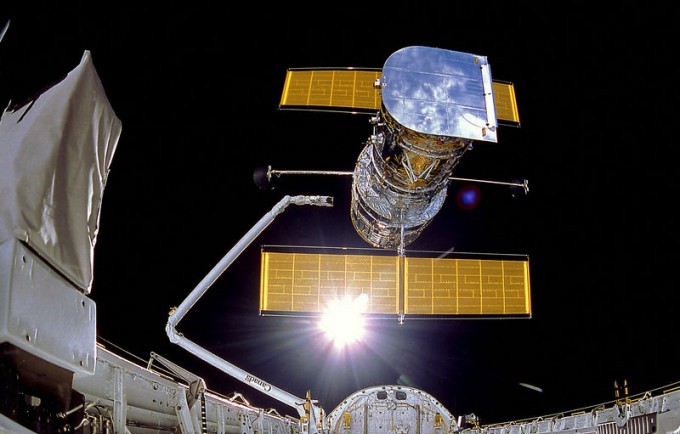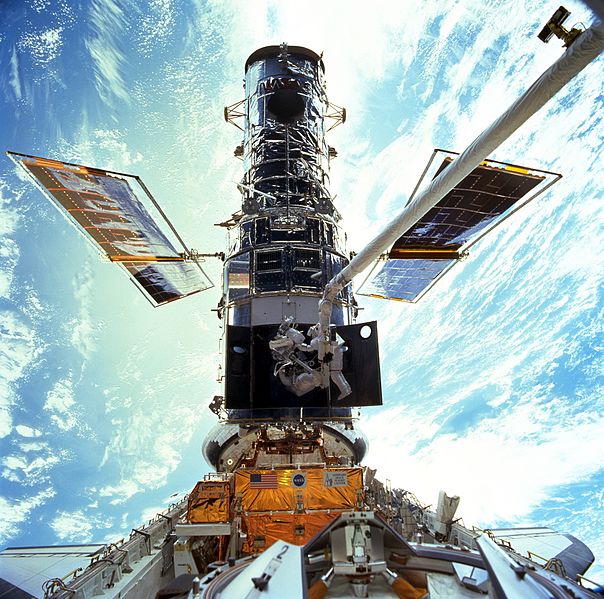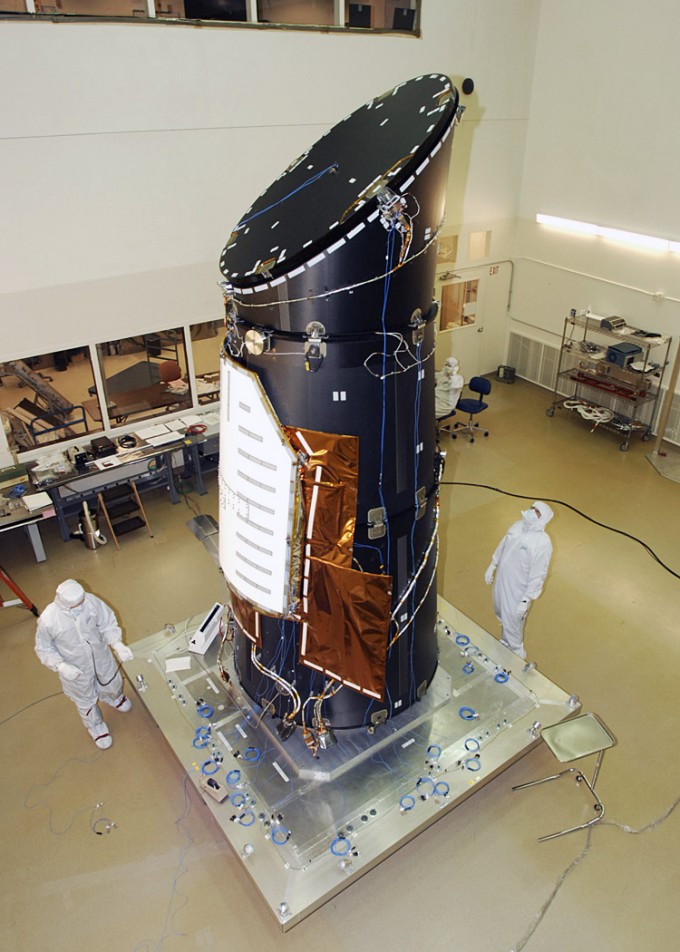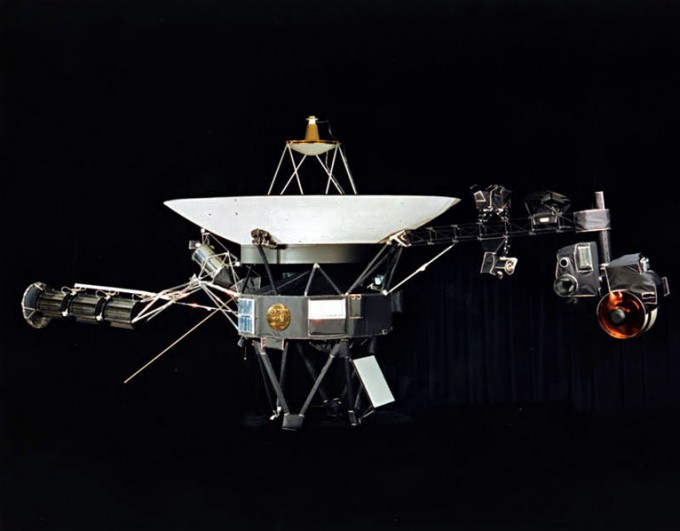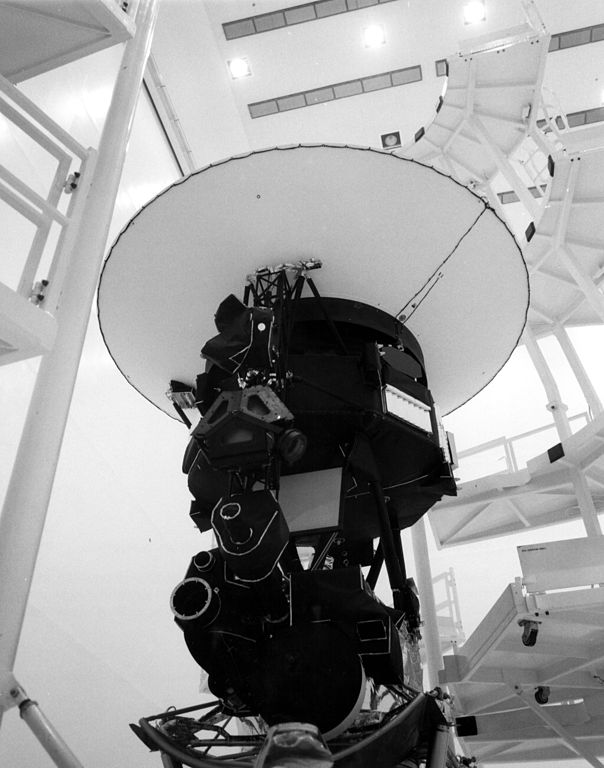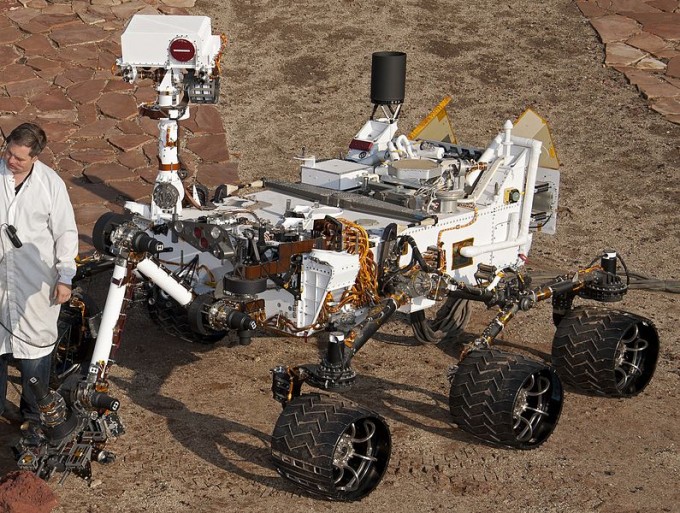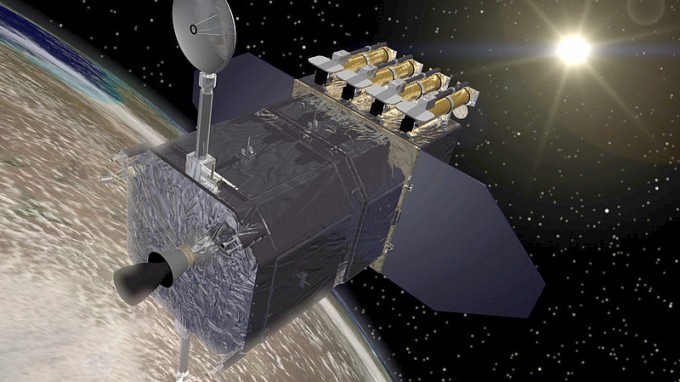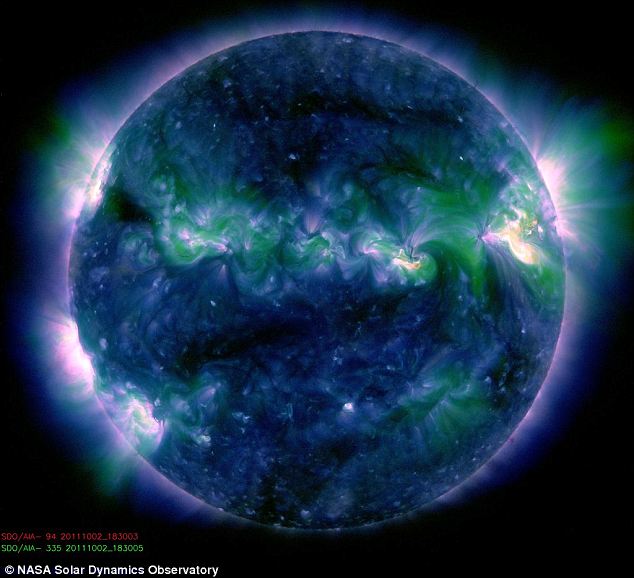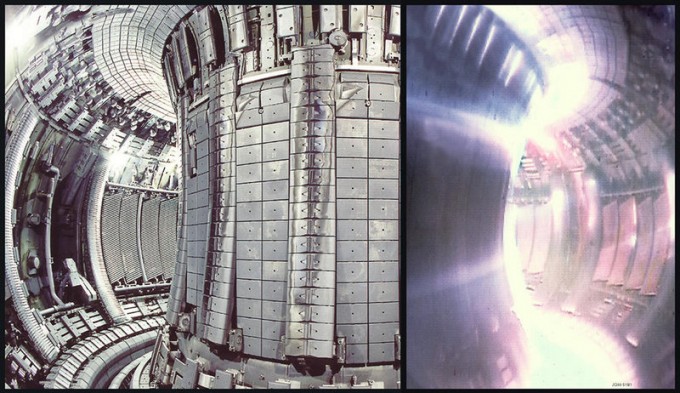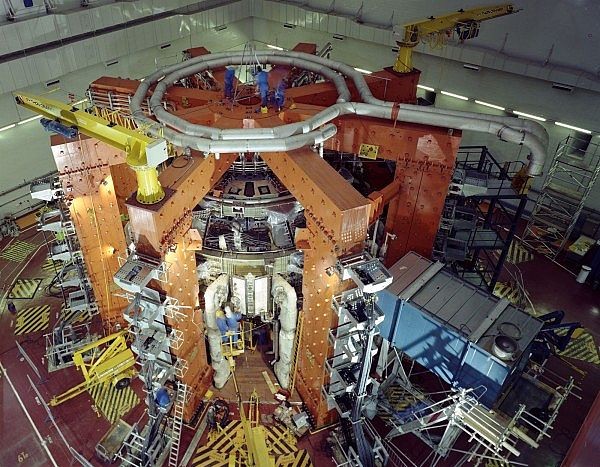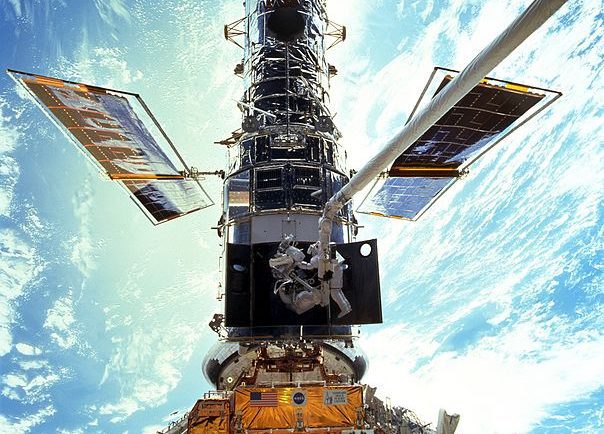
Science is AMAZING (as you know lol), but what is also amazing is the technology that we enjoy as a result of the pursuit of knowledge and understanding of our universe via Science! Whether it directly affects you or not, what we learn as a result of all of these different things vastly improves life on this planet for everyone. It also sets the stage for future generations to stand on our shoulders, and make the world a better place, just as we have stood on the shoulders of giants that came before us. Genius of the likes of Newton, Einstein, Tesla, and many others spent their life discovering things that paved the way for us to create most of the things you enjoy on a daily basis.
Science, Technology And Society
It has never been a more exciting time to be a Science geek than now because we have such incredible technology and a growing understanding of the universe. When you study history, then look at these modern marvels featured below – just take a step back, and have your mind blown to pieces by just how advanced these things are compared to anything ever mentioned in a history book. Science, technology and society (and the inventions, disciplines, and technology that emerge from it) really have a lot to do with the world around you, the standard of living we enjoy today, and of course the future of humanity. 50 years from now this world will most likely look like another planet (if it is still here) from all of the technical & Scientific advances that we are laying the ground work for today.
Technology and society or technology and culture refers to cyclical co-dependence, co-influence, co-production of technology and society upon the other (technology upon culture, and vice-versa). This synergistic relationship occurred from the dawn of humankind, with the invention of simple tools and continues into modern technologies such as the printing press and computers. The academic discipline studying the impacts of science, technology, and society and vice versa is called (and can be found at) Science and technology studies.
The importance of stone tools, circa 2.5 million years ago, is considered fundamental in human development in the hunting hypothesis.
It has been suggested, in Catching Fire: How Cooking Made Us Human, that the control of fire by early humans and the associated development of cooking was the spark that radically changed human evolution.
All these little changes in mobile phones, like Internet access, are further examples of the cycle of co-production. Society’s need for being able to call on people and be available everywhere resulted in the research and development of mobile phones. They in turn influenced the way we live our lives. As the populace relies more and more on mobile phones, additional features were requested. This is also true with today’s modern media player.
Society also influenced changes to previous generation media players. In the first personal music players, cassettes stored music. However, that method seemed fragile and relatively low fidelity when compact disks came along. Later, availability of MP3 and other compact file formats made compact disks seem too large and limited, so manufactures created MP3 players which are small and hold large amount of data. Societal preferences helped determined the course of events through predictable preferences.
As you can see throughout history Science & Technology have fueled many an innovation and breakthrough. Today we showcase some of the most fascinating, massive, incredible, and awesome Scientific Machines made by man that harness awesome bleeding edge technology to study and observe the very large or the very small mysteries in our universe. Exciting times we live in! We hope that you learn a lot from these machines, get inspired to push some boundaries of your own, and say “Wow” numerous times. Enjoy!
Large Hadron Collider
A truly incredible machine – one of the largest machine ever built by humans, and one of mans greatest achievements (it is also the worlds largest science experiment)! This thing is HUGE, So Massive. The Large Hadron Collider (LHC) is the world’s largest and highest-energy particle accelerator. It was built by the European Organization for Nuclear Research (CERN) from 1998 to 2008, with the aim of allowing physicists to test the predictions of different theories of particle physics and high-energy physics, and particularly that of the existence of the hypothesized Higgs boson and of the large family of new particles predicted by supersymmetric theories. It contains six detectors each designed for specific kinds of exploration.
The LHC lies in a tunnel 27 kilometres (17 mi) in circumference, as deep as 175 metres (574 ft) beneath the Franco-Swiss border near Geneva, Switzerland. Its synchrotron is designed to collide opposing particle beams of either protons at up to 7 teraelectronvolts (7 TeV or 1.12 microjoules) per nucleon, or lead nuclei at an energy of 574 TeV (92.0 µJ) per nucleus (2.76 TeV per nucleon-pair). It was built in collaboration with over 10,000 scientists and engineers from over 100 countries, as well as hundreds of universities and laboratories. I want to one day visit this masterpiece, but for now, at least I can check the beam status on their site.
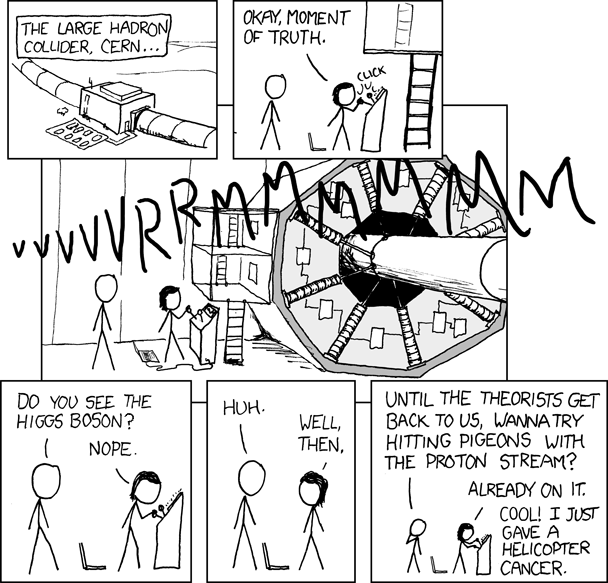
You know your awesome when XKCD makes a comic about you, LHC Machine.
Titan Transmission Electron Microscope
Behold, the FEI Titan 80–300 electron microscope. This commercial microscope is one of the most powerful and advanced microscopes available today. You can see one in action on the BBC Horizon documentary “How Small is the Universe?” (which is awesome). It can be operated at voltages between 80 and 300 keV, both in TEM and STEM (that is scanning TEM) modes. To minimize the mechanical vibrations, the microscope is located in a separate room within a sound-proof enclosure and is operated remotely. The electron source is a Schottky type field emission gun with a relatively low energy spread of 0.8 eV at 300 keV. In order to reduce chromatic aberrations, this spread is further lowered to 0.13 eV at 300 keV and 0.08 eV at 80 kV using a Wien-filter type monochromator. Both the illumination lens, which is located above the sample and is conventionally called the condenser lens, and the collection lens (called the objective lens) are equipped with fifth-order spherical aberration correctors. The electrons are further energy filtered by a GIF filter and detected by a CCD camera. The filter makes it possible to select electrons scattered by specific chemical elements and so identify individual atoms in the sample being studied. Needless to say, it is way more powerful than the microscope you played with in your high school science class.
Swiss Light Source
The Swiss Light Source is a synchrotron located at the Paul Scherrer Institute in Switzerland for producing electromagnetic radiation of high brightness. Basically, it is a million watt lightbulb that produces one of the most powerful highly focused x-ray beams in the world that is used to split electrons. Planning started in 1991, project was approved in 1997, and first light from the storage ring was seen at December 15, 2000. The experimental program started in June 2001 and it is used for research in materials science, biology and chemistry.
International Space Station
Our flying station in the sky. The International Space Station (ISS) is a habitable artificial satellite in low Earth orbit. It follows the Salyut, Almaz, Skylab and Mir stations as the ninth space station to be inhabited. The ISS is a modular structure whose first component was launched in 1998. Like many artificial satellites, the station can be seen with the naked eye from Earth without any special equipment. The ISS consists of pressurised modules, external trusses, solar arrays and other components. ISS components have been launched by American Space Shuttles as well as Russian Proton and Soyuz rockets. Budget constraints led to the merger of three space station projects with the Japanese Kibō module and Canadian robotics. In 1993 the partially built Soviet/Russian Mir-2, the proposed American Freedom, and the proposed European Columbus merged into a single multinational programme. The Russian Federal Space Agency (RSA/RKA) is using the ISS as a work site to assemble their next space station, called OPSEK. Modules and components for the new station began arriving on orbit in 2010, and the RSA plans to commission the new station before the remainder of the ISS is de-orbited.
The ISS serves as a microgravity and space environment research laboratory in which crew members conduct experiments in biology, human biology, physics, astronomy, meteorology and other fields. The station is suited for the testing of spacecraft systems and equipment required for missions to the Moon and Mars. The station has been continuously occupied for 11 years and 365 days, having exceeded the previous record of almost 10 years (or 3,644 days) held by Mir, in 2010. The station is serviced by Soyuz spacecraft, Progress spacecraft, the Automated Transfer Vehicle, the H-II Transfer Vehicle, and formerly the Space Shuttle. It has been visited by astronauts and cosmonauts from 15 different nations. On 25 May 2012, Space Exploration Technologies Corporation (or SpaceX) became the world’s first privately held company to send a cargo load, via the Dragon spacecraft, to the International Space Station. Go Elon Musk!
Hubble Space Telescope
The Hubble Space Telescope (HST) is a space telescope that was carried into orbit by a Space Shuttle in 1990 and remains in operation. A 2.4-meter (7.9 ft) aperture telescope in low Earth orbit, Hubble’s four main instruments observe in the near ultraviolet, visible, and near infrared. The telescope is named after the astronomer Edwin Hubble and is the largest of our Space Telescopes.
Hubble’s orbit outside the distortion of Earth’s atmosphere allows it to take extremely sharp images with almost no background light. Hubble’s Ultra-Deep Field image, for instance, is the most detailed visible-light image ever made of the universe’s most distant objects. Many Hubble observations have led to breakthroughs in astrophysics, such as accurately determining the rate of expansion of the universe.
Although not the first space telescope, Hubble is one of the largest and most versatile, and is well known as both a vital research tool and a public relations boon for astronomy. The HST was built by the United States space agency NASA, with contributions from the European Space Agency, and is operated by the Space Telescope Science Institute. The HST is one of NASA’s Great Observatories, along with the Compton Gamma Ray Observatory, the Chandra X-ray Observatory, and the Spitzer Space Telescope.
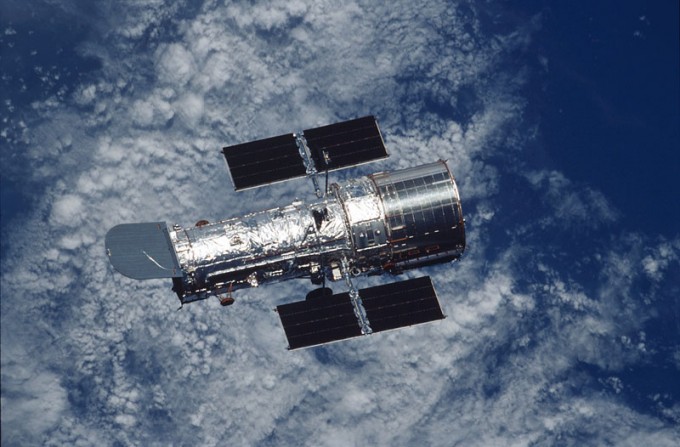
It makes one trip around the earth every 97 minutes. Amazing.
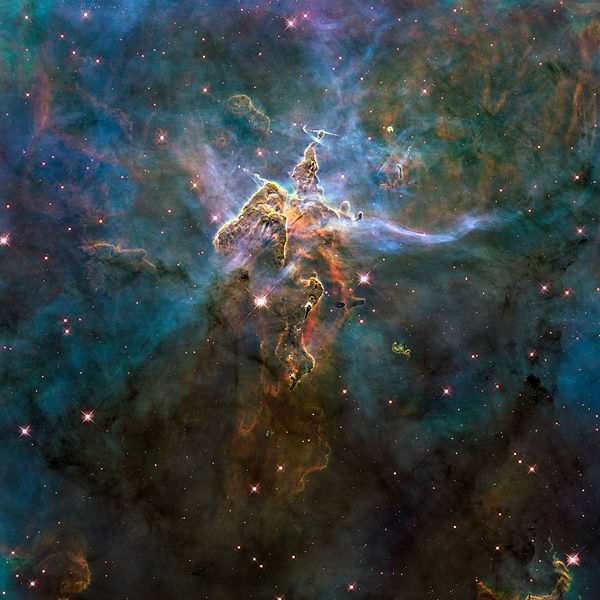
To commemorate Hubble Telescope’s 20th anniversary, NASA released this Wide Field Camera 3 shot of a portion of Carina Nebula, dubbed “Mystic Mountain”. Taken in February 2010, oxygen is colored blue, hydrogen and nitrogen green, and sulfur with red
Advanced Composition Explorer (ACE) Satellite
The Advanced Composition Explorer (ACE) is a NASA Explorer program Solar and space exploration mission to study matter comprising energetic particles from the solar wind, the interplanetary medium, and other sources. Weighing in at 596 kilograms (1,313 lb), it has a number of instruments to track solar winds and cosmic rays which can give a 1 hour in advance warning about geomagnetic storms that are heading towards earth. Real-time data from ACE is used by the Space Weather Prediction Center to improve forecasts and warnings of solar storms. The ACE robotic spacecraft was launched August 25, 1997 and is currently operating in a Lissajous orbit close to the L1 Lagrange point (which lies between the Sun and the Earth at a distance of some 1.5 million km from the latter). The spacecraft is still in generally good condition, and has enough fuel to maintain its orbit until 2024. NASA Goddard Space Flight Center managed the development and integration of the ACE spacecraft.
This video really puts ACE’s purpose into perspective
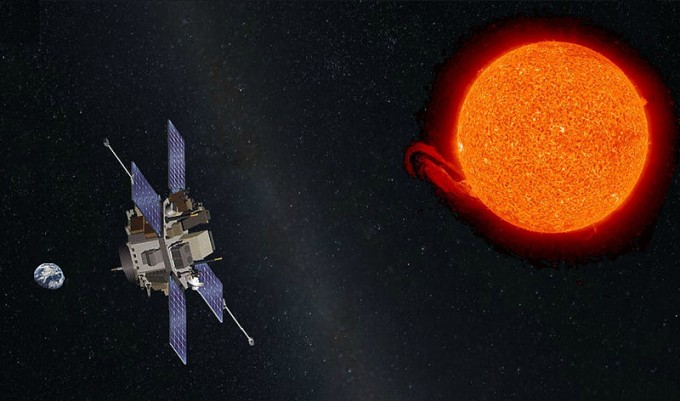
This guy pretty much lives here. It orbits at the L1 Lagrangian point, between the sun and the Earth. Thanks for letting us know about those Solar Winds Bro! *in satellite voice* You. Are. Welcome… Heart Emoticon. Bzzt
Kepler Telescope
Kepler is a relatively low-cost space observatory launched by NASA to discover Earth-like planets orbiting other stars. It also introduced an awesome concept – “Citizen scientist participation” – you can actually discover planets yourself using the telescopes Image Data! So Cool! The spacecraft, named in honor of the 17th-century German astronomer Johannes Kepler, was launched on 7 March 2009, and has been active for 3 years, 7 months and 17 days as of 24 October 2012.
The Kepler mission is “specifically designed to survey a portion of our region of the Milky Way galaxy to discover dozens of Earth-size planets in or near the habitable zone and determine how many of the billions of stars in our galaxy have such planets.” Kepler’s only instrument is a photometer that continually monitors the brightness of over 145,000 main sequence stars in a fixed field of view. This data is transmitted to Earth, then analyzed to detect periodic dimming caused by extrasolar planets that cross in front of their host star.
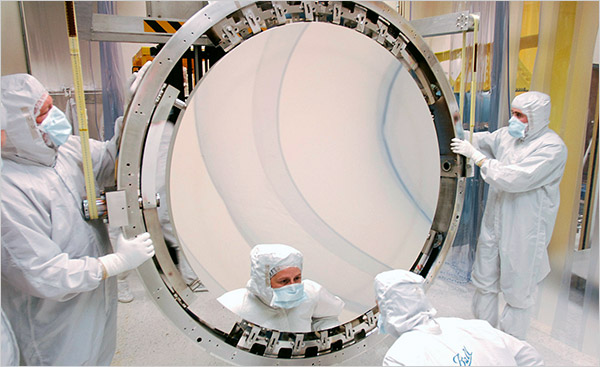
The primary mirror of the Kepler telescope. The craft’s mission is to discover Earth-like planets in Earth-like places.
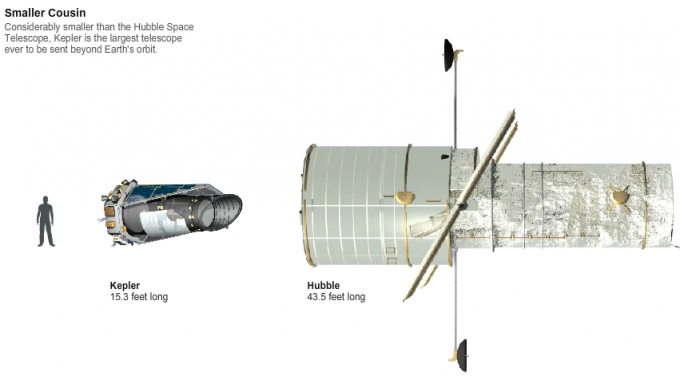
Kepler is designed to measure tiny brightness variations in stars that might indicate orbiting planets.
Voyager 1
One of my Favorite Satellites of All Time! (I’mma let you finish, lol) To me, the Voyager 1 is a prime example as to WHY we NEED space programs like this, and why the things we learn from them over the course of their lives are invaluable. You cannot put a price tag on the progression of the understanding of our Universe, For Humanity! We have learned so much from Voyager since it launched 35 years ago. The Voyager 1 spacecraft is a 722 kilogram (1,592 lb) space probe launched by NASA on September 5, 1977 to study the outer Solar System and interstellar medium. Operating for 35 years, 1 month and 26 days as of 31 October 2012, the spacecraft receives routine commands and transmits data back to the Deep Space Network. At a distance of about 122 AU (1.83×1010 km) as of September 2012, it is the furthest manmade object from Earth. Voyager 1 is now in the heliosheath, which is the outermost layer of the heliosphere. On June 15, 2012, NASA scientists reported that Voyager 1 may be very close to entering interstellar space and becoming the first manmade object to leave the Solar System.
As part of the Voyager program, and like its sister craft Voyager 2, the spacecraft is in extended mission, tasked with locating and studying the boundaries of the Solar System, including the Kuiper belt, the heliosphere and interstellar space. The primary mission ended November 20, 1980, after encountering the Jovian system in 1979 and the Saturnian system in 1980. It was the first probe to provide detailed images of the two largest planets and their moons.
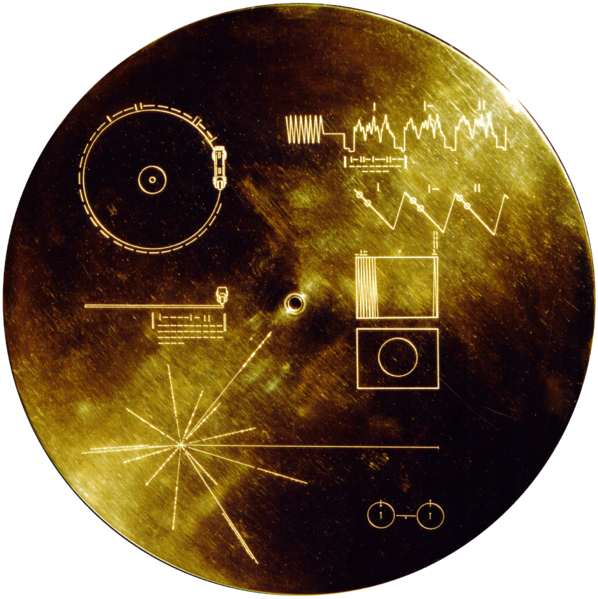
So Awesome, Probably my favorite part of the Voyager spacecrafts. Each Voyager space probe carries a gold-plated audio-visual disc in the event that either spacecraft is ever found by intelligent life-forms from other planetary systems.
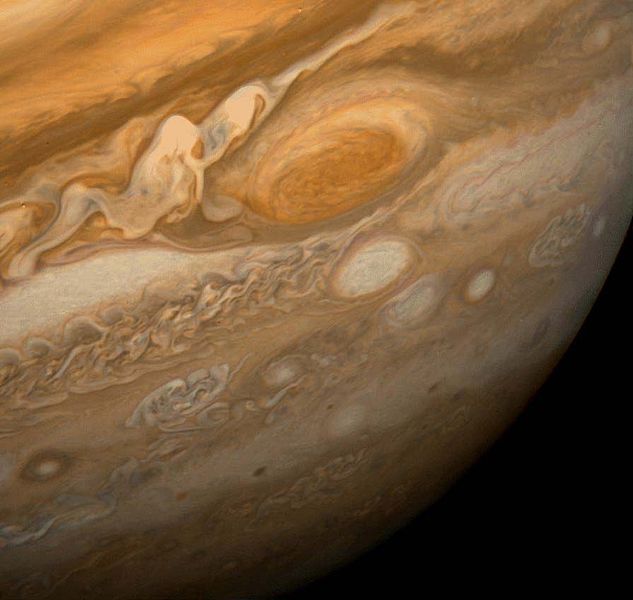
Simply Stunning. One of the first ever detailed images of Jupiter. The Great Red Spot as seen from Voyager 1 in 1979.
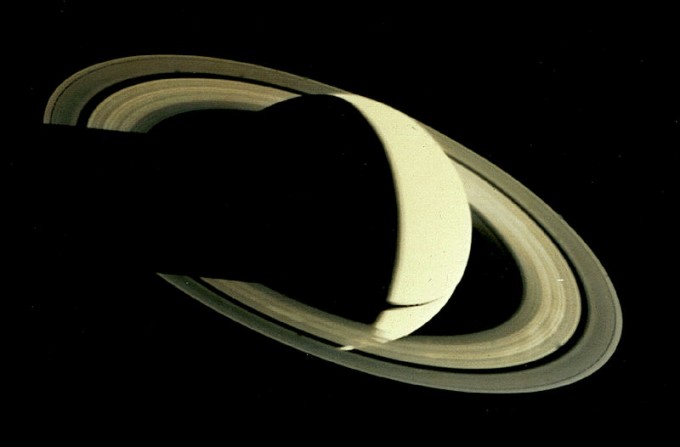
One of the first ever detailed images of Saturn. Saturn from 5.3 million km, four days after its closest approach in 1980. 5 years before I was born, this thing was hurdling through space taking historic pictures of other worlds, and now I am here telling you how awesome that is. That to me, is mind blowing.
Curiosity Mars Rover
The Machine that got a generation interested in space travel again! Watching this thing landing on mars LIVE was a tremendously historical event. Another great example of money well spent in the name of Space & Science Technology! The Curiosity rover is a car-sized robotic rover exploring Gale Crater on Mars as part of NASA’s Mars Science Laboratory mission (MSL).
Curiosity was launched from Cape Canaveral on November 26, 2011, at 10:02 EST aboard the MSL spacecraft and successfully landed on Aeolis Palus in Gale Crater on Mars on August 6, 2012, 05:17 UTC. The Bradbury Landing site was less than 2.4 km (1.5 mi) from the center of the rover’s touchdown target after a 563,000,000 km (350,000,000 mi) journey. The landing site coordinates are: 4.5895°S 137.4417°E.
The rover’s goals include: investigation of the Martian climate and geology; assessment of whether the selected field site inside Gale Crater ever has offered environmental conditions favorable for microbial life, including investigation of the role of water; and planetary habitability studies in preparation for future human exploration.
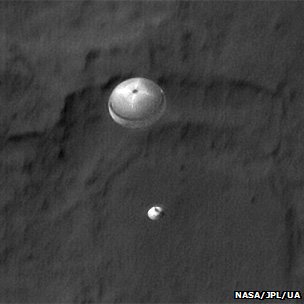
Parachute descent of the Curiousity rover to Mars
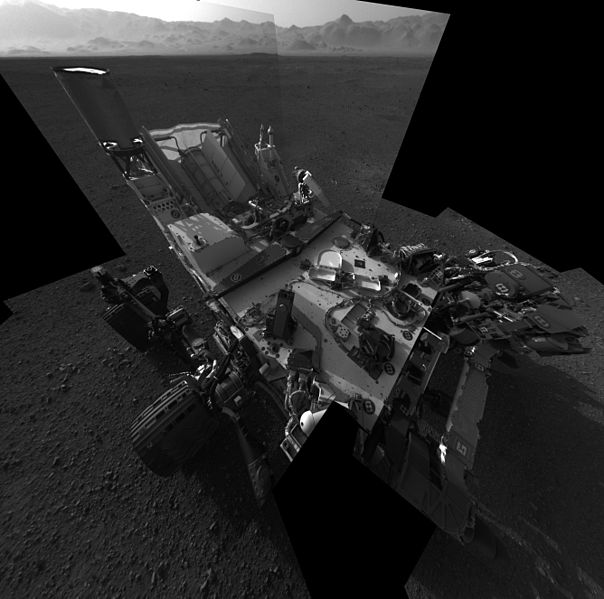
This full-resolution self-portrait shows the deck of NASA’s Curiosity rover from the rover’s Navigation camera.
Solar Dynamics Observatory (SDO) Satellite
The Solar Dynamics Observatory Basically takes a high resolution image of the sun in 10 different wavelengths of light once every 10 seconds. Awesome. The Solar Dynamics Observatory (SDO) is a NASA mission which will observe the Sun for over five years. Launched on February 11, 2010, the observatory is part of the Living With a Star (LWS) program. The goal of the LWS program is to develop the scientific understanding necessary to effectively address those aspects of the connected Sun–Earth system that directly affect life and society. SDO’s goal is to understand the Sun’s influence on Earth and near-Earth space by studying the solar atmosphere on small scales of space and time and in many wavelengths simultaneously. SDO will investigate how the Sun’s magnetic field is generated and structured, how this stored magnetic energy is converted and released into the heliosphere and geospace in the form of solar wind, energetic particles, and variations in the solar irradiance.
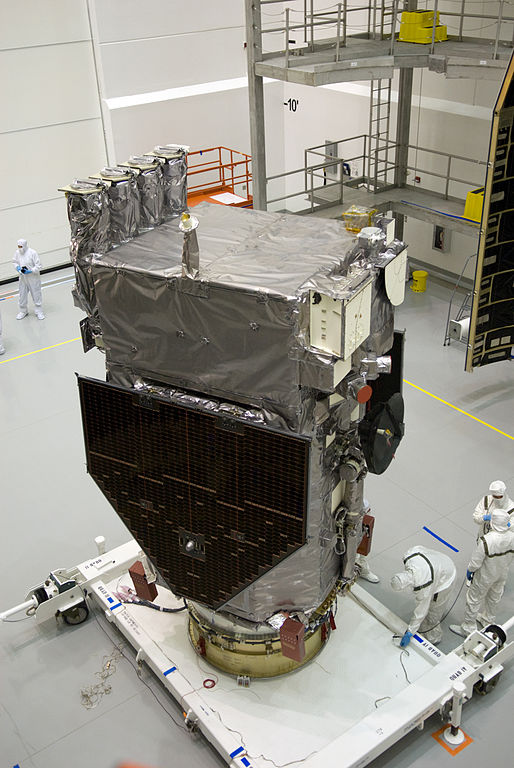
SDO ready to be placed on Atlas rocket for launch.
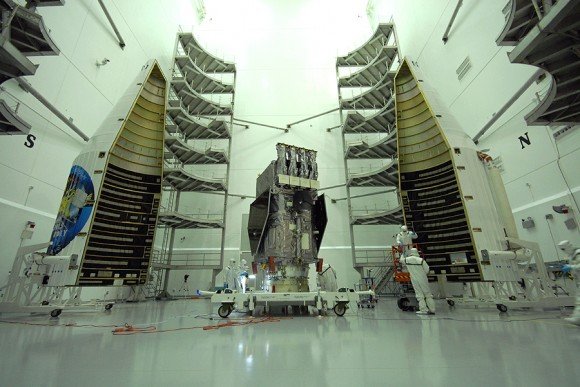
The SDO satellite with the solar arrays folded down about to be put into the upper casing of the rocket.
JET Tokamak
Probably one of the coolest pieces of science technology here. JET, the Joint European Torus, is a magnetic confinement plasma physics experiment located in Oxfordshire, UK. It is currently the largest facility of its kind in operation (but that will only be until ITER is built, construction starts in 2013. Then ITER will then be overshadowed by 4x more powerful DEMO wayyyy in the future, construction for this starts in 2024. THEN PROTO will be created after that in post-2050.)
The main purpose of JET is to open the way to future nuclear fusion experimental tokamak reactors such as ITER and DEMO.
The JET facilities are situated on a retired Navy airfield near Culham, Oxfordshire – RNAS Culham (HMS Hornbill), in the UK: the construction of the buildings which house the project was undertaken by Tarmac Construction, starting in 1978 with the Torus Hall being completed in January 1982. Construction of the JET machine itself began immediately after the completion of the Torus Hall, with the first plasma experiments in 1983.
The components for the JET machine came from manufacturers all over Europe, with these components transported to the site.
Because of the extremely high power requirements for the tokamak, and the fact that power draw from the main grid is limited, two large flywheel generators were constructed to provide this necessary power. Each 775 ton flywheel can spin up to 225 rpm. One generator provides power for the 32 toroidal field coils, the other for inner poloidal field coils. The outer field coils draw their power from the grid.
JET is equipped with remote handling facilities to cope with the radioactivity produced by deuterium-tritium (D-T) fuel, which is the fuel proposed for the first generation of fusion power plants. Pending construction of ITER, JET remains the only large fusion reactor with facilities dedicated to handling the radioactivity released from D-T fusion. The power production record-breaking runs from JET and TFTR used 50–50 D-T fuel mixes.
Nuclear Fusion is extremely fascinating – French Nobel laureate in physics, Pierre-Gilles de Gennes said of nuclear fusion, “We say that we will put the sun into a box. The idea is pretty. The problem is, we don’t know how to make the box.”. According to researchers at a demonstration reactor in Japan, a fusion generator should be feasible in the 2030s and no later than the 2050s. Japan is pursuing its own research program with several operational facilities that are exploring several fusion paths.
That thing is AWESOME.
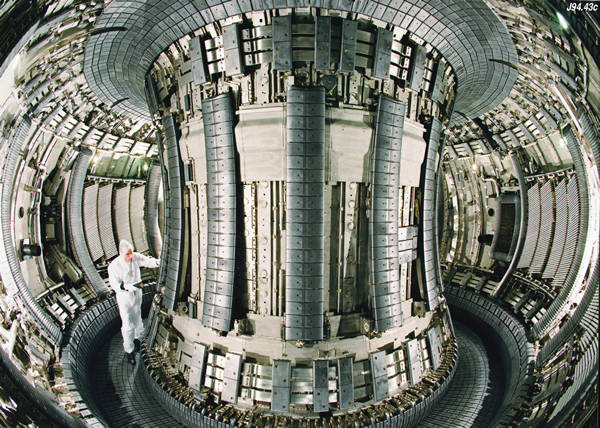
Inside the JET tokamak, operated at Abbingdon, UK
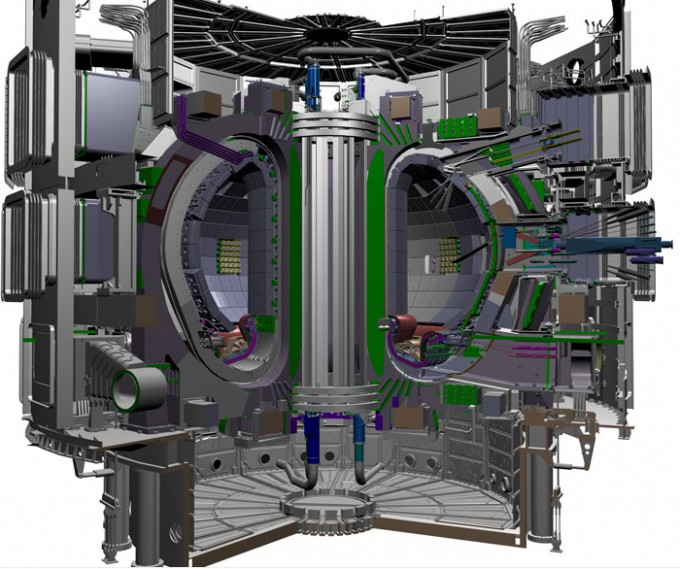
Diagram of the Inside of a Tokamak Reactor
What was your favorite Massive Scientific Machine? Are you working on any experiments? or have you seen any of these modern marvels in person? Let us know in the comments below! Thanks for Reading!
You like this? Don’t forget to follow us on twitter @infinigeek and like us on facebook @infinigeek! We are also on that Google Plus thing.



